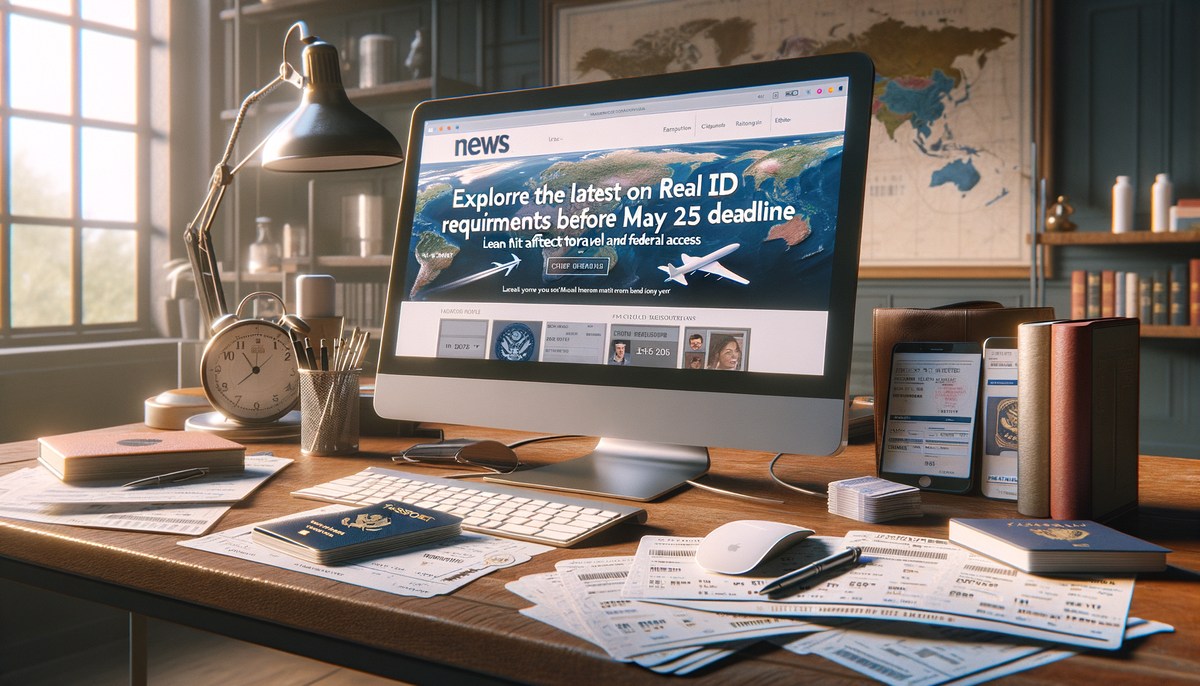REAL ID Requirements: What You Need to Know
Explore the latest on REAL ID requirements before the May 2025 deadline. Learn how they affect travel and federal access.

REAL ID Requirements: What You Need to Know
The growing need for heightened security in identification has brought significant changes to how U.S. citizens and residents must prepare for both air travel and access to federal facilities. REAL ID requirements are at the forefront of these changes, and they are also one of the most talked-about topics today.
Understanding REAL ID
The REAL ID Act, which was enacted in 2005, establishes the minimum security standards for state-issued driver's licenses and identification cards. It is a federal initiative aimed at enhancing national security and reducing the risk of fraudulent identification. Beginning on May 7, 2025, possessing a REAL ID-compliant driver's license or an alternative approved identification, such as a passport, will be crucial for anyone wishing to board domestic flights or access certain federal buildings [CNN] [The Guardian].
The Bodacious Benefits of REAL ID
One might ask, why the REAL ID? According to Thomas Carter, TSA’s Federal Security Director for New Jersey, the REAL ID is an orchestrated endeavor by the federal government aimed at deterring terrorists and enhancing the reliability and accuracy of state-issued identification cards [Fox News]. REAL ID-compliant cards will have a special marking—typically a star at the top right corner—to set them apart from non-compliant IDs [CNN].
Mandatory Compliance Deadline
The May 7, 2025 deadline is fast approaching, creating urgency among those who have yet to upgrade their identification. Without a REAL ID, individuals will need alternative documents such as a passport to board domestic flights or enter federal facilities. Existing standard IDs marked “NOT FOR REAL ID PURPOSES” will become invalid for these federal purposes after this deadline. This means now is the time to prepare! [The Guardian]
Steps to Acquiring a REAL ID
Acquiring a REAL ID is not a one-size-fits-all process; it varies by state. However, most state motor vehicle agencies require applicants to provide a suite of documents, which generally include:
- Proof of Identity: Such as a U.S. birth certificate or a U.S. passport.
- Proof of Social Security Number: This can be a Social Security card or a recent pay stub.
- Proof of Residency: Including documents like utility bills, bank statements, or rental agreements.
In New Jersey, for example, the requirements include additional proof such as state residency and legal presence documents for non-citizens [Fox News].
Navigating the REAL ID Maze
Though applying for a REAL ID might seem daunting, it is a manageable task with the right preparation. Typically, obtaining a REAL ID requires an in-person visit to your local Department of Motor Vehicles (DMV), often by appointment.
Actionable Advice: Check for specific document requirements and schedule your appointment well in advance, as delays and high demand can lead to longer processing times. Visit your state's DMV website for the latest updates and instructions.
Your Partner in REAL ID Transition
Embracing REAL ID requirements allows businesses and individuals to future-proof their identification methods. As leaders in consulting on identification protocols, our firm offers customized guidance to ensure a seamless transition to this new standard. Our expert consultancy services enable clients to navigate the complexities of the REAL ID implementation process, ensuring compliance and peace of mind.
We invite you to explore how our expertise can assist in making your REAL ID journey smooth and effective.
Call to Action
Don't wait until the deadline. Prepare now and ensure your travels and federal building access remain uninterrupted. Contact us today to learn more about how we can help you with your real ID requirements and beyond!




